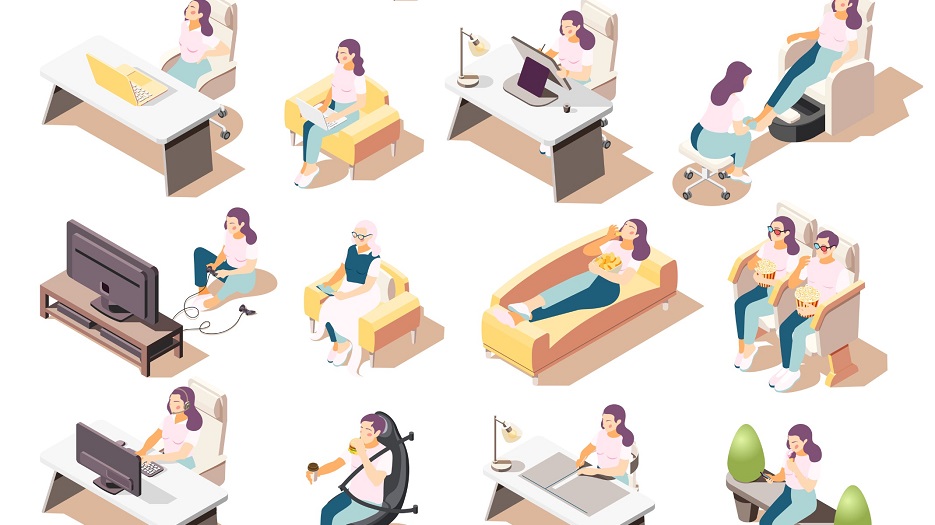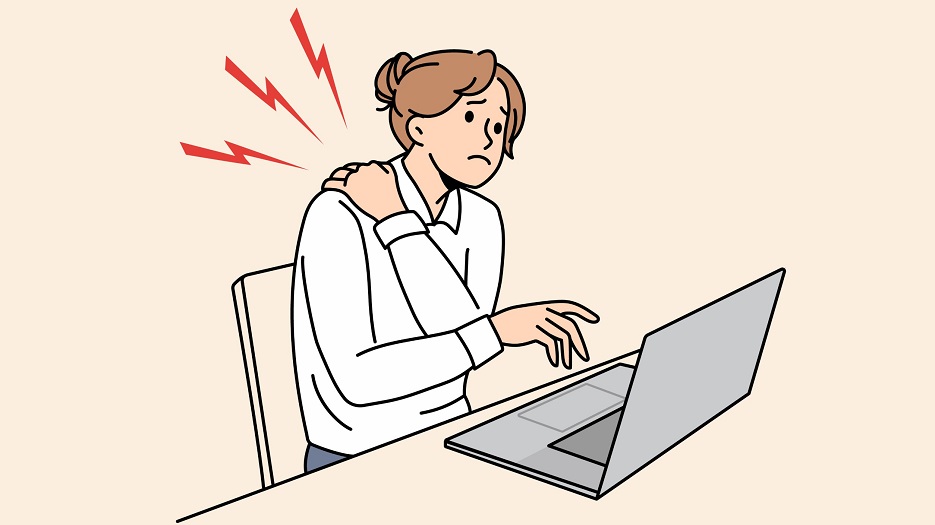An American study from 2005 shows that we spend more time sedentary (i.e. sitting or reclining) today than we did 60 years ago, in our cars, in front of our TVs, and in front of our laptops. Nearly two decades on, this has only become truer. The digital world continues to evolve, and more and more jobs require little to no physical activity. The COVID-19 pandemic exacerbated these scenarios even more, restricting us to our homes where it became even harder to break up the day with periods of movement.
Benefits of exercising at your desk
The purpose of 'desk yoga' is to create accumulated positive impact and decrease the amount of sedentary time in your day. It doesn’t matter if you start with just five minutes of exercises using just your body weight every other day. As with weightlifting, the most important point is incremental progress, for example, increasing the frequency to 10 minutes of daily exercise after a month. The benefits of incorporating increased movement into your work day are:
● Increasing blood flow: Healthy blood circulation is connected to building strong muscles and bones.
● Improving mood: Exercise is associated with an increase in endorphins, which leads to a nice mood boost.
● Adding natural screen breaks: The general recommendation is frequent, short breaks, e.g., 5 to 10 minutes for every hour of screen time. Make a point of avoiding reading emails or watching Youtube while doing your movements.
● Reducing stress: Besides the physiological benefits of office exercises, taking an intentional few minutes to prioritise yourself can have immense mental health benefits. If work is a source of chronic stress (this is defined as prolonged stress, which is a detriment to physical and mental health), exercise helps you manage stress by regulating the body’s blood cortisol levels.
● Improving posture: With regular, correct practice, you could see improvements in posture, which is related to easing back and neck pain.
Negative effects of sitting for long periods of time


Research has shown that even 30 minutes of daily physical activity isn’t enough to counteract the negative impacts of extended periods of sitting. The negative health implications of prolonged sitting include:
● Increased risk of obesity
● Increased risk of Type 2 Diabetes
● Increased blood pressure
● Increased BMI (higher body fat)
● Larger waist circumference
How to do desk exercises

Here are 10 equipment-free exercises and stretches that you can do at your desk, five of which target your upper body and five that target your lower body. Balance is key! We’ve included some recommended sets and reps for you to get your blood pumping in 10 minutes.
Wall push ups
Stand arm’s length from the wall with your feet slightly wider than shoulder-length. Place your hands on the wall and lean against the wall, then push back to your original position. Focus on making your ‘lowering’ action slow and steady. Do three sets of ten reps.
Chest opener
Stand with your legs slightly wider than shoulder-length and bring your hands to meet behind your back. Inhale, then bring your clasped hands over as if you want them to touch the ground in front of you as you exhale. Go only as far as you comfortably can, whether your hands are two inches or two feet from the ground. Take five deep breaths. You can also do this as a sitting exercise if more support is needed.
Wrist opener
This desk stretch counteracts the tension built over hours of typing. Hold your right hand straight in front of your right shoulder and gently pull your right fingers back with your left palm until you feel a stretch in your right wrist and forearm. Hold this for five breaths, then alternate.
Forward fold
This desk stretch is ideal for stretching your back and hamstrings, and reversing blood flow in the upper body. Stand up straight without locking your knees, stretch your arms up, and fold your body forward, keeping a slight bend in your knees to protect them. Wherever your arms are able to reach, stay there for ten breaths.
Cross-arm stretch
Another desk stretch that sounds simple but is great for muscle lengthening if you do it consistently, a cross-arm stretch involves hugging one arm across your chest to warm up your chest and shoulders. Take ten deep breaths on both sides.

Chair squats
You can do this office exercise with your chair if you want some extra support. Stand with your legs around shoulder width, and push your hips back into a squat. Sit back into your chair lightly if you’re using it, then slowly stand back up. Go as low into the squat as is comfortable for your knees. Do three sets of 10 squats.
Swivelling arm jump rope
This will have your heartbeat up in no time. Hop lightly with both feet off the ground at the same time, as if you’re jumping rope. If you want to make this desk exercise more advanced, hold your arms straight out to the side and make small circles with your fingertips as you jump to engage the arm muscles. Jump for three sets of one minute each.
Alternating calf raises
Stand next to your desk with your hands touching it for support. Lift one foot to hover above the ground, then lift and lower on the foot that’s still on the ground, focusing on engaging your calf. Do two sets of 15 reps per side.
Knee to chest: hold variation for deeper stretch
This sitting exercise can target your core or stretch your hip and lower back depending on the frequency. If you want to stretch, sit in your chair, bring one knee up to your chest with both hands just below the knee and hold it for ten breaths each side. If you want to work your core, hold the chair base for support and bring one knee into your chest, extending it back to straight, and then repeating ten times each side.
Triangle pose
This movement is effective for both stretching and strengthening. You’re able to stretch your hips and chest while activating your abdominal and back muscles. Stand with one foot facing in front of you and bring the other foot three feet behind you, and your toes facing out slightly. Bring your arms perpendicular to the floor, then hinge your hips and bring your fingers down. Wherever they land, whether it’s your shin, ankle or the floor, stay here for ten breaths. Repeat on the other side.
After completing this quick desk yoga, you should feel warm or may even be sweating. Incorporating even a few of the exercises into your working routine should have you feeling refreshed, more focused and ready to tackle the rest of the day.
Conclusion
Compass Offices is your office expert in the Asia-Pacific region, with business centres in nine major cities, including Tokyo, Ho Chi Minh, Singapore, Hong Kong, Melbourne and Sydney. Get in touch with our team to learn more about finding a serviced office, virtual office or custom workspace for your enterprise, no matter whether you’re a team of one or 100. We offer short- and long-term lease terms so that you can be flexible in your body and your office space solutions.
Read More about Office Life
5 DIY easy and delicious lunch ideas (that won't stink up the office!)